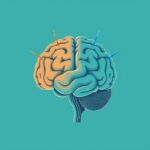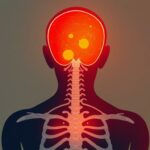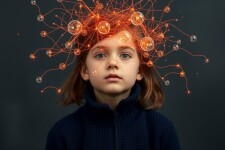Near-death experiences, often abbreviated as NDEs, have fascinated people for centuries. They sit at the mysterious intersection between life and death, sparking curiosity and debate among scientists, psychologists, and spiritual seekers alike. What exactly happens when someone comes close to death and reports vivid experiences—visions of light, feelings of peace, or encounters with departed loved ones? From a psychological perspective, near-death experiences provide a unique window into human consciousness, brain function, and the ways our minds cope with trauma and the unknown.
Before diving deep into the psychology behind near-death experiences, it’s essential to understand what qualifies as an NDE. Typically, these are profound personal events reported by people who have been close to dying or were clinically dead and revived. The experiences often share common elements: an overwhelming sense of peace, a tunnel of light, an out-of-body sensation, or a life review. Scientists and psychologists examine these phenomena to understand whether these experiences are windows to an afterlife, products of brain activity, or a complex combination of psychological responses.
The Common Features of Near-Death Experiences

Across cultures and individual differences, near-death experiences exhibit remarkable similarities. These shared features have been cataloged and studied extensively, offering clues to their psychological nature. Let’s take a look at a list and a table outlining the most commonly reported elements:
Common Near-Death Experience Elements
- Out-of-body experience (feeling of floating above one’s body)
- A sense of peace and the absence of pain or fear
- Encountering a bright light or tunnel
- Meeting deceased relatives or spiritual beings
- A life review or panoramic playback of one’s past actions
- Feeling of returning to the body reluctantly
Summary of Near-Death Experience Features
| Feature | Description | Possible Psychological Explanation |
|---|---|---|
| Out-of-body experience | Perception of observing oneself from above or outside of the physical body | Brain’s attempt to interpret traumatic sensory information or dissociation during trauma |
| Sense of peace | Feeling of calmness and absence of distress despite physical trauma | Endorphin release and psychological defense mechanisms |
| Encountering bright light | Perception of a luminous tunnel or light source | Activation of visual cortex and hypoxia-related neural phenomena |
| Meeting spiritual beings | Reports of seeing guides, angels, or deceased loved ones | Memory and imagination interplay, cultural influences |
| Life review | Re-experiencing major life events in a rapid, panoramic manner | Rapid firing of neural circuits related to memory during trauma |
These features provide a framework to analyze near-death experiences from a psychological standpoint, blending neuroscientific and experiential interpretations.
Psychological Explanations for Near-Death Experiences
The human brain is incredibly complex, especially when it approaches the edge of survival. Psychologists have proposed several theories to explain why near-death experiences occur, focusing on the brain’s function during extreme stress, trauma, and altered states of consciousness.
Neurobiological Factors
One prevailing explanation involves neurobiology. During critical conditions like cardiac arrest or severe trauma, the brain experiences oxygen deprivation (hypoxia) and chemical imbalances. These conditions can cause abnormal activation of brain regions, including the temporal lobe and the visual cortex, leading to vivid sensory experiences such as tunnels of light or out-of-body sensations. Studies have shown that stimulating specific brain areas can induce similar experiences in healthy individuals, reflecting the brain’s capacity to create these phenomena naturally.
Dissociation and Psychological Defense
Near-death experiences might also function as psychological defense mechanisms. In moments of extreme stress or pain, dissociation can help the mind detach from unpleasant sensations. The feelings of peace and detachment from the body potentially serve to protect the individual from psychological trauma. This framework aligns with what psychologists observe in other forms of trauma and dissociative experiences, where the brain shields the conscious self from overwhelming distress.
Cultural and Personal Influences
It’s important to recognize that personal beliefs and cultural backgrounds shape how individuals interpret their near-death experiences. For example, someone raised with a religious understanding of the afterlife might report meeting spiritual beings or angels, whereas others might have more secular or abstract experiences. This suggests that while near-death experiences may have biological roots, the narratives people build around them are influenced by personal and societal frameworks.
Research Methodologies in Studying Near-Death Experiences
Understanding near-death experiences scientifically poses unique challenges. It’s not easy—or ethical—to induce such experiences experimentally, so most studies rely on retrospective accounts and case studies. Researchers use several methods to analyze and validate NDE reports:
- Qualitative Interviews: In-depth interviews allow researchers to explore the content and emotional impact of the experience.
- Standardized Questionnaires: Tools like the Greyson NDE Scale quantify experiences to facilitate comparison across individuals and studies.
- Medical Correlations: Researchers correlate NDE reports with medical data, such as EEG readings, oxygen saturation, and medication use, to explore neurological states during the event.
- Longitudinal Studies: Following patients over time to observe lasting psychological or behavioral changes resulting from NDEs.
The Greyson NDE Scale
One of the most renowned instruments in NDE research is the Greyson NDE Scale. It includes 16 questions that cover various NDE aspects such as cognitive, affective, paranormal, and transcendental features. Each question is scored, allowing researchers to determine whether a person’s experience qualifies as an NDE and to what degree.
Psychological Impact of Near-Death Experiences
Regardless of their origins, near-death experiences can significantly affect individuals’ mental health and life perspectives. Many who undergo NDEs report profound positive changes:
- A decreased fear of death
- Increased appreciation for life
- Heightened spirituality or religious faith
- Greater compassion and altruism
- Shift in values and priorities
Conversely, some individuals may also struggle with confusion, anxiety, or difficulty reintegrating into daily life after such a profound event. This mixture of outcomes makes psychological support critical for people reporting near-death experiences.
Transformational Effects on Identity
People often describe NDEs as life-changing or even transformative. The experience can challenge previous beliefs about the self, existence, and the nature of reality. Many describe feeling more connected to others and the universe, which psychologists interpret as an expansion of the self-concept and a more integrated identity.
Debates and Controversies in Psychological Perspectives
While many accept psychological explanations for near-death experiences, the topic remains controversial. Some argue that NDEs provide evidence of an afterlife or spiritual dimension beyond science’s reach. Others maintain a strictly reductionist view that all such experiences must be brain-generated illusions or hallucinations.
Even within psychology, there are debates about the best models to explain NDEs. Some favor neurochemical explanations, while others emphasize psychological resilience and meaning-making. This diversity of opinion reflects the complexity of near-death experiences and the challenge of studying phenomena that bridge subjective experience with objective science.
Challenges in Objectively Studying Near-Death Experiences
One major challenge is the subjective nature of these experiences. Unlike most psychological phenomena, near-death experiences are deeply personal and often ineffable, making standardized assessment difficult. Moreover, variability in individuals’ medical conditions and the circumstances under which NDEs occur can obscure findings.
Another issue is confirmation bias: people who already hold beliefs about an afterlife may interpret experiences as proof of their views, while skeptics may dismiss them as mere brain activity. This polarization sometimes hinders collaborative research efforts.
Integrative Approaches: Bridging Psychology, Neuroscience, and Spirituality
The most fruitful path forward may be an integrative approach that respects the contributions of psychology, neuroscience, and spiritual inquiry. Understanding near-death experiences requires us to recognize the interplay between brain physiology, mental processes, and cultural meanings. As research advances, this multidisciplinary view can provide a richer, more compassionate appreciation of what NDEs signify for individuals and humanity as a whole.
Future Directions in Near-Death Experience Research
Researchers are increasingly using advanced neuroimaging techniques, careful clinical monitoring, and rigorous psychological assessments to unravel the complexities of near-death experiences. Innovations like functional MRI (fMRI) during cardiac arrest, or studies of meditation and altered states, may shed light on the neural underpinnings of NDE phenomena.
At the same time, psychologists advocate for more comprehensive support systems for those who experience NDEs, acknowledging the profound emotional and existential shifts that may occur.
Summary Table: Psychological Perspectives on NDEs
| Aspect | Psychological Explanation | Scientific Evidence |
|---|---|---|
| Out-of-body experience | Dissociation and altered sensory processing | Induced by temporal lobe stimulation, documented in various studies |
| Sense of peace | Endorphin-mediated emotional regulation | Observed in trauma patients and animal models |
| Encountering light | Hypoxia-induced visual cortex activation | Well-documented in neurophysiology |
| Spiritual or religious visions | Cultural narrative and memory synthesis | Cross-cultural similarities with variations |
| Life review | Rapid memory recall under stress | Correlates with brain activity during trauma |
Conclusion

Near-death experiences stand at the fascinating crossroads of psychology, neuroscience, culture, and spirituality. From a psychological perspective, they offer an extraordinary insight into how the human brain and mind navigate the threshold of death, weaving together biology, emotion, and meaning. While the exact nature of NDEs continues to inspire debate and research, what remains clear is the profound impact these experiences have on individuals’ lives and consciousness. By embracing both scientific inquiry and compassionate understanding, psychology helps demystify near-death experiences, shedding light on one of humanity’s most profound and mysterious encounters with the unseen border between life and what may lie beyond.





















Как мужчина, Алексей:
Это действительно захватывающая тема. Понимание того, что происходит с нашим сознанием на грани смерти, помогает лучше понять не только психологию, но и саму суть человеческой жизни. Такие исследования могут открыть новые горизонты в медицине и психологии.